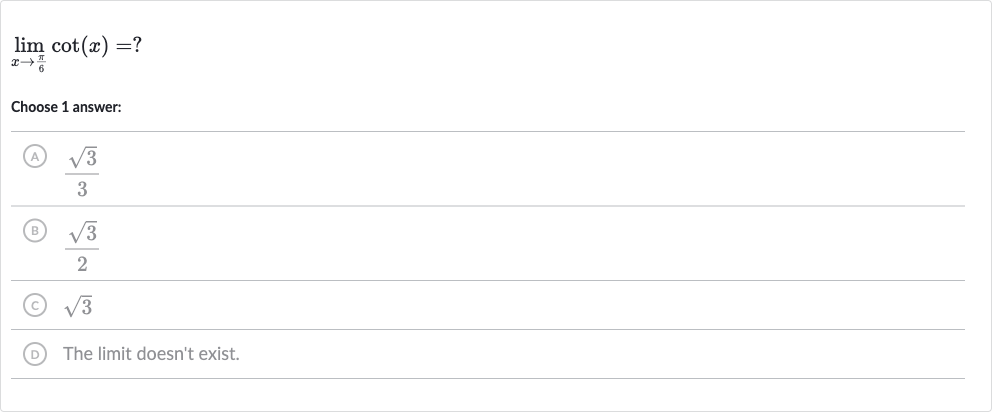Full solution
Q. Choose answer:(A) (B) (C) (D) The limit doesn't exist.
- Definition of cotangent: To find the limit of as approaches , we need to understand the definition of cotangent. Cotangent is the reciprocal of the tangent function, so .
- Finding : We know that is equal to because is the ratio of the opposite side to the adjacent side in a right-angled triangle, and for an angle of ( degrees), this ratio is .
- Reciprocal of : Therefore, is the reciprocal of , which means . To find this value, we multiply the numerator and denominator by to get rid of the fraction in the denominator.
- Rationalizing the denominator: After simplifying, we get . To rationalize the denominator, we multiply the numerator and denominator by .
- Simplifying : This gives us which simplifies to .
- Final result: After canceling out the in the numerator and denominator, we are left with .

